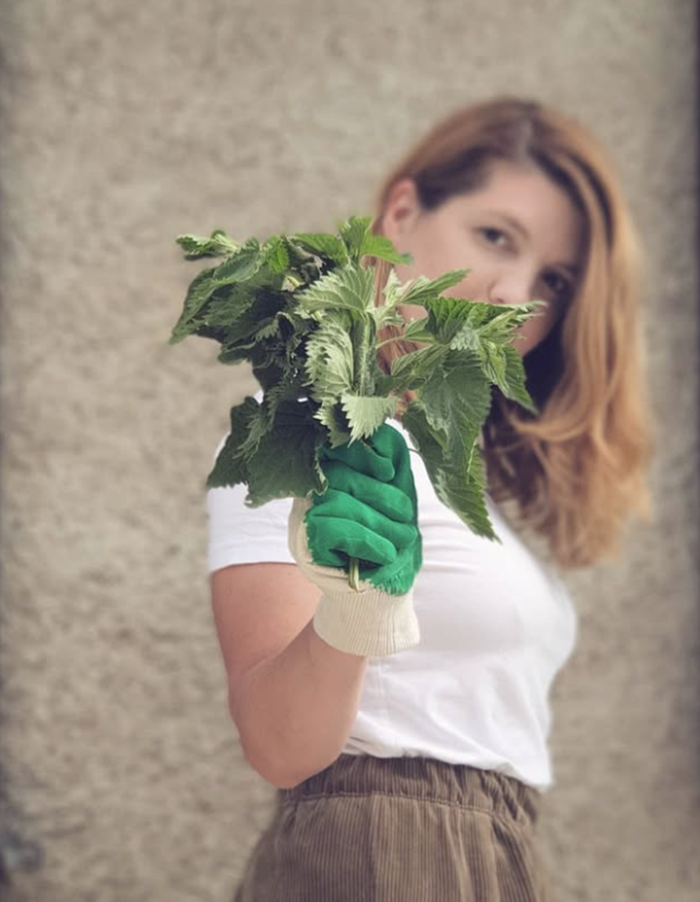Stinging nettles (Urtica dioica) are quite the paradox in the plant world. Despite their remarkable health benefits, we know them primarily for the irritating sting they deliver upon contact with our skin. This defensive mechanism has earned nettles somewhat of a nuisance reputation rather than a valuable resource. Many gardeners encounter these plants with dread, doing everything possible to eliminate them. Yet beneath that prickly exterior lies one of nature’s most nutritious and useful plants. One that traditional cultures have treasured for centuries.
Throughout history, nettles have been utilized in numerous cultures for food, medicine, and even textiles. In Northern and Eastern European cuisine, nettle soup was a traditional springtime dish that made up a great source of nutrients after long winters, when few fresh greens were available . They were also used to make a durable fiber for clothing and rope. Today, places like Turkey, Greece, parts of Eastern Europe and the Himalyas still incorporate nettles into their traditional cuisine, but the practice is losing popularity.
What science has to say
The health benefits of nettles are well-documented since Antiquity and have been demonstrated by modern research since. These plants contain exceptionally high levels of minerals including iron, calcium, magnesium, and potassium, along with vitamins A, C, K, several B vitamins and even protein. Studies have shown that nettles contain compounds with anti-inflammatory properties that may help conditions like arthritis and seasonal allergies. Data shows that nettle extracts may also help reduce symptoms of benign prostatic hyperplasia and can potentially lower blood pressure, help with blood sugar control, support liver and kidney health, improve wound healing and prevent osteoporosis.
So why don’t we eat them anymore?
The decline in foraging for wild plants like nettles largely stems from increasing urbanization, which has disconnected many people from natural environments where these plants grow. Most people I know think it’s weird I eat stuff that grows “outside” and “in soil”, as if the food they buy at the supermarket appeared out of thin air. Speaking of supermarkets, they too have reduced the need to seek out wild foods by providing convenient year-round access to a standard selection of produce. As a consequence, our agricultural system has evolved to focus on a relatively small number of highly productive crops that can be efficiently grown, harvested, and distributed , without much focus on nutritional value. And just like that, the knowledge gets lost and nettles become annoying weeds… unless you walk into a health store where they cost up to 8 euros for 100 grams. But why but them when they are available for free?

What to do with nettles:
Cooking with nettles is surprisingly simple once you learn to handle them safely. To harvest, wear thick gloves and use scissors to cut the top few inches of young plants, which offer the most tender leaves. The stinging compounds are neutralized completely by cooking, blanching, or drying. A 30-second blanch in boiling water eliminates the sting. The most popular way of enjoying them is as a soup or as tea but really, they can be used much like spinach. Here are a few ideas:
- Nettle soup
- Nettle spanakopita
- Nettle pesto
- Nettle ghormeh sabzi
- Nettles ice tea
- Nettle saag aloo
- Nettle quiche
- Nettle gnocchi
Note: When foraging, always exercise caution and be 100% certain of plant identification before consuming. Harvest only from areas free of pesticides and other contaminants, away from roadsides and industrial zones. Respect natural habitats by harvesting sustainably—never take more than you need or collect rare species. Remember that wild plants provide essential food sources for pollinators and other wildlife.

